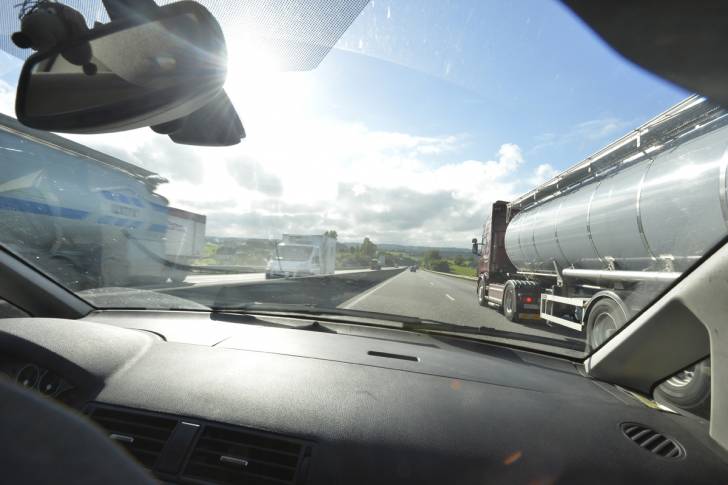European Union Suppliers Sharing Autonomous SmartsEuropean Union Suppliers Sharing Autonomous Smarts
Roberto Vavassori, president of the European Association of Automotive Suppliers, says in his keynote speech to the group that to keep pace with the development of autonomous-vehicle technologies, R&D investment is essential.
May 5, 2017

BRUSSELS – European Union automotive suppliers are accelerating innovation in connected and automated driving (CAD), but the race is being run globally, industry experts and policymakers say.
“Industry is investing massively to develop new technologies paving the way to CAD,” says a spokesperson for the European Association of Automotive Suppliers (CLEPA), which conducted an April 25 policy debate entitled Safe, Sustainable, Smart Mobility in Brussels.
“Different sectors – telecommunications, automotive, electronics, (software) and hardware have launched several projects to enhance cooperation and share knowledge – for example, the European Automotive Telecom Alliance – and more innovations will make CAD even safer.”
Violeta Bulc, commissioner for transport and mobility with the European Commission, the EU’s executive body, adds, “Digitalization is the most important transformation in the car industry.” The EC will present a 2030 policy plan governing autonomous driving by December, following the May 31 release of a low-emissions mobility policy package, she says.
In the meeting’s keynote speech, CLEPA president Roberto Vavassori says for association members to remain world leaders in automotive technology, R&D investment is essential. “I believe Europe has understood that message quite well,” he tells the meeting. “But I think more can and should be done, with instruments like Horizon 2020 (the EU’s biggest R&D program with nearly €80 billion [$87.2 billion] of funding available from 2014 to 2020).
“The beauty of collaborative and pre-competitive R&D is not only that the investment risks are spread,” says Vavassori, a member of the management board of Italian brake manufacturer Brembo. “Importantly, it creates the eco-system of – sometimes unlikely – partners that are necessary to spur innovation.
“And by doing that, it helps to keep the center of gravitas where it should be: in Europe.”
Jos Delbeke, director general at the EC’s directorate general for climate action, agrees, saying: “We need massive investment into recharging (infrastructure) and we need to beef up efforts on (improving) batteries. The EU is not up to speed in comparison with other parts of the world and Asia.”
A report by U.K.-based Juniper Research predicts there will be 20 million driverless cars on the roads by 2025, and the car-components industry will be central to this automotive revolution, the CLEPA spokesperson says. But he emphasizes all parties – industry, EU institutions and national and local governments – must be involved to test the technologies successfully in real life.
The CLEPA spokesperson calls EU member states’ March 23 signing of a letter of intent to facilitate cross-border testing and deployment of CAD an “appreciated first step.”
“Hopefully a holistic approach will result from close cooperation between industry on one side and international, European, national and local institutions on the other, combining financial, regulatory, infrastructure and societal support to CAD deployment,” the spokesperson says.
Frank Forsterling, head of advanced development and innovations infotainment solutions at German parts manufacturer Continental, says at the conference information-technology companies’ contributions to automated driving are essential. “Europe is well-positioned in technology, but a key challenge is to close the gap with IT companies in the United States (and) Asia.
“The contribution of software and services is new for the automotive industry. We need the best from all industries: IT, telecoms, infrastructure and artificial intelligence.”
A study released in March by industry consultancy Deloitte finds “up to 13,000 IT specialists and mobility managers may be required for future car companies to play a significant role in the market.”
Forsterling tells WardsAuto that to promote automated driving, “We need to start with enhanced sensor technology: cameras, radars, and lasers. Then we must expand technology in terms of software and services. We need dedicated technologies and artificial intelligence to recognize the environment like traffic signs, fog or snow.”
Jean-Francois Tarabbia, senior vice-president R&D and product marketing at automotive supplier Valeo, also highlights the importance of sensors to CAD. A spokesperson says the French company produces more than 500,000 ultrasound sensors a day, as well as cameras and radars.
Price is key to CAD success, conferees were told, although the Deloitte study finds up to 68% of people it surveyed would pay more for an autonomous car than for a vehicle they have to drive themselves.
Advanced driver-assistance systems in cars are becoming increasingly common, Tim Vink, automotive supplier Honeywell’s regulatory affairs director, tells WardsAuto on the sidelines of the event. Software ultimately will be able to control the car, he says, adding, “Humans will just be a fall-back solution.”
Noting self-driving Volvos already are on Swedish roads, Vink says Volkswagen is expected to bring out driverless models by 2019, while U.K. automaker Vauxhall is conducting research on the lower end of the CAD market.
Automakers should aim to install this know-how in all cars, not just luxury models, Continental’s Forsterling says.
You May Also Like